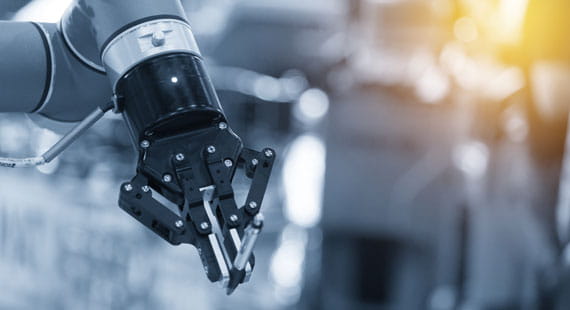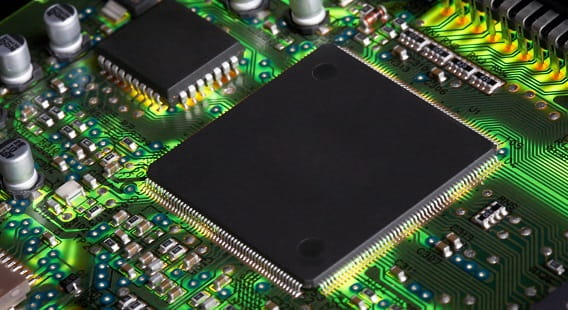
Ensure safety compliance and global market access
Ensure safety compliance and global market access
Robots have become a vital part of any modern industrial facility and are largely deployed in the production of goods, but also in construction, healthcare and service industries. An ever-increasing number of manufacturing and logistics processes are now fully automated, and often assisted by industrial robots and automated guided vehicles (AGVs). With their enhanced capabilities, robots can be the key to innovative processes and new services. Autonomous mobile robots, such as service and assistant robots, are increasingly taking on tasks that go beyond industrial processes. Depending on the task and the selected solution, a robot can collaborate directly with the user, or work completely autonomously.
However, given that a system failure can carry severe consequences for both people and equipment, compliance with regional and international robot safety standards is becoming a key concern for suppliers and system integrators – many of whom are turning to specialists like TÜV SÜD to ensure compliance.
Robot technology draws on a range of technical disciplines, which means ensuring the safety of industrial robots is an extensive exercise which requires multiple assessments, including mechanical safety, electrical safety and functional safety.
In addition to the geographical location of the robot at point of use, different compliance rules will also apply depending on the application, the interface used and the capabilities of the robot. These are all important considerations when selecting a certification partner that can support the future success of your equipment.
Offering fully certified, enhanced levels of product safety demonstrates compliance with industry standards and best practice processes for the protection of people, operations and equipment assets. Minimising risk with third-party testing and certification not only ensures global market access, but builds trust with existing and potential customers, through the reassurance of uncompromising standards.
As is the case for any industrial machinery, robots are subject to many different requirements relating to machinery, electromagnetic compatibility (EMC) and radio equipment. To protect both the equipment and those using it, there have also been specific standards developed for stationary, collaborative and mobile robots, as well as for robot systems.
Safety is of the highest priority when humans and robots are working side by side – also known as human-robot-collaboration (HRC), or collaborative robot (cobot). Consequently, manufacturers of cobots are faced with a broad set of safety requirements, as reflected in numerous technical guidelines and standards. To ensure compliance, TÜV SÜD’s safety experts can assess your cobot product and provide third-party certification, thereby paving the way for successful market access.
Cobot systems combine manual and automated assembly to form a hybrid system, thereby uniting the strengths of humans and robots. If wisely deployed, cobots can increase process efficiencies and product quality, as well as relieve humans from physically exhausting and repetitive work.
A barrier-free environment where the safety of the employee is always guaranteed is a basic requirement for a collaborative system. EN ISO 12100 is the technical requirements of the EN ISO 10218 “Robots and robotic devices” standard series, which includes the technical specifications ISO/TS 15066 ”Robots and robotics – Collaborative robots“. Risk assessment according to EN ISO 12100 defines the safety requirements for collaborative industrial robot systems and their working environment.
An essential component of a cobot application is the robot gripper. Obviously, it’s not possible to process and handle any items without it, but it does represent a possible risk. The force required for gripping and the specific handling of the work piece are crucial safety factors. ISO TR 20218-1 outlines the interface and safety requirements for gripper systems. Download cobot safety infographic.
Successful certification of industrial robots, robotic systems, and control systems demands compliance to all applicable technical guidelines and standards in your target markets. TÜV SÜD’s testing and certification services cover the following aspects:
Mobile robots, service robots and assistant robots (including personal-care robots) profoundly differ from industrial robots. This robot category is typically performing high-value, individual and often (semi-)autonomic actions, and are generally characterised by great flexibility and a high level of autonomy. To perform their tasks – which often includes replacing or supplementing human activity - assistant and service robots must utilise learning and re-programming features to determine and analyse their environment.
Requirements for humans and robots to work together safely include:
Mobile robots (IMR/AGVs) are used in automation and logistics. These vehicles are divided into different categories according to ANSI/RIA R15.08:
A leading certification body, TÜV SÜD offers a comprehensive portfolio of robotic safety testing throughout the product lifecycle
Global recognition: TÜV SÜD offers a comprehensive portfolio of robotic safety testing, product certification and auditing services. Our highly-skilled team of machinery safety experts hold unrivalled knowledge of cutting-edge technologies including robotics, industrial connectivity and additive manufacturing, which means we are best placed to support your business in meeting the very latest robot safety standards.
Extensive experience: Supporting suppliers and system integrators throughout the product lifecycle, we are the robotic safety partner of choice for many market-leading organisations working from blueprint and installation through to operation and decommissioning.
Compliance for your business: The robotic safety standards landscape is both extensive and fragmented, with a range of ISO/IEC, EN, ANSI and UL standards applying either regionally or globally. Our knowledgeable team will work alongside your key decision makers to identify the right compliance levels for your business, your supply chain and your chosen markets.
Future-proofed: Industry 4.0 and the rise of the smart factory is driving change in robotic safety. This means navigating the most relevant robotic safety requirements is a complex and resource-intensive task. Appoint TÜV SÜD as your certification partner of choice and ensure compliance, not just for the markets you operate in now, but the ones you plan to penetrate in the future.


Designed to work alongside humans, cobots are subject to strict safety requirements.
Learn More

Learn how to avoid functional safety errors in future safety projects.
Learn more

Learn about the technical requirements of the ATEX Directive and the IECEx Scheme.
Learn more
Sélectionnez votre emplacement
Global
Americas
Asia
Europe
Middle East and Africa